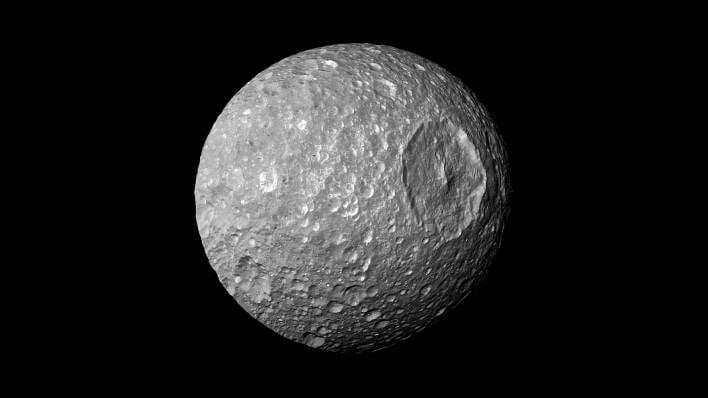Scientists Just Found A Secret Infant Ocean Hiding In Saturn’s Death Star Moon

The research team, led by French astronomer Valery Lainey, recently announced the discovery of a newly formed ocean on Mimas. The revelation could end up changing how scientists and astronomers define ocean moons and their habitability. While the research team notes that Mimas is perhaps the “unlikely place” to search for the presence of a global ocean, they add that a detailed analysis has proven otherwise.
“Here, from detailed analysis of Mimas’ periapsis drift, we show that its heavily cratered icy shell hides a global ocean, at a depth of 20-30 kilometers,” the team remarks in a recent publishing in the journal Nature. It adds, “Eccentricity damping implies that the ocean is likely to be less than 25 million years old and still evolving.”

Mimas, however, has a thick, icy exterior that has not given scientists a reason before now to believe water existed beneath its rocky surface. Lainey and her team of researchers suggest that Mimas’ ocean exists 12 to 18 miles (20 to 30 kilometers) beneath the moon’s surface. Their findings are based on observations made by NASA’s Cassini spacecraft, which sent back data of Saturn’s moons for over a decade before meeting its fate as it crashed into Saturn’s surface in 2017.
Lainey told Space.com in an interview about Mimas, “The major finding here is the discoverability of habitability conditions on a solar object which we never, never expect to have liquid water. It’s really astonishing.” Matija Cuk and Alyssa Rose Rhoden remarked in an editorial about the find, “The idea that relatively small, icy moons can harbor young oceans is inspiring.”

